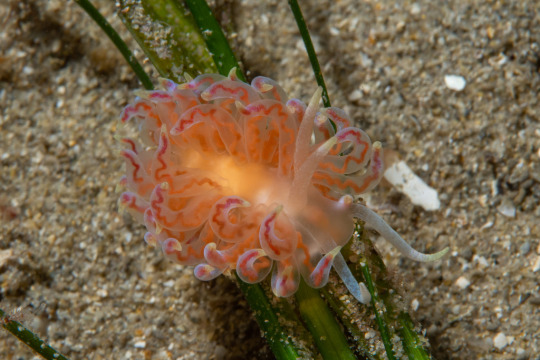Just a biology student sharing her love of animals and other organisms while also educating herself about them. Mostly reblogs but might occasionally post something of her own. Enjoy your stay :)
Don't wanna be here? Send us removal request.
Photo

Branched Asphodel (Asphodelus ramosus L.) This beautiful flower is in full bloom in Malta right now. It's commonly found in steppe, disturbed garigue, and clifftops with amazing views. #flower #asphodel #xanthorrhoeacae #malta #march #beautiful #hagar qim #branched #plant #green #whiteflower (at Għar Ħanex) https://www.instagram.com/p/CbVjnIhsqDZ/?utm_medium=tumblr
5 notes
·
View notes
Photo



The Garden Snail (Cornu aspersum) These critters are found all over the world, but are native to the Mediterranean region and Western Europe. They might be considered as pests to citrus trees (picture 3), vegetables, flowers, and cereals, but they are incredibly photogenic creatures. It just rained too. They were literally everywhere I looked, so I could not resist taking a few pictures! #snails #gardensnail #common #animalphotography #malta #photography #mollusc #cornuaspersum #helicidae #cutesnails #rain https://www.instagram.com/p/CbFdJCEgeC4/?utm_medium=tumblr
#snails#gardensnail#common#animalphotography#malta#photography#mollusc#cornuaspersum#helicidae#cutesnails#rain
4 notes
·
View notes
Photo

Meet the Metallic Starling (Aplonis metallica). Distinguished by its iridescent sheen and bright red eyes, this bird can be spotted in parts of northeastern Australia or New Guinea. It’s a very social bird that lives in a variety of habitats, including rainforests and mangroves, and feeds on fruit and insects.
Photo: Graham Winterflood, CC BY-SA 2.0, flickr
#AnimalFacts #Birds #Nature #Starlings #iridescent https://www.instagram.com/p/CaYjnATLe8J/?utm_medium=tumblr
2K notes
·
View notes
Text

Phyllodesmium poindimiei is a brightly coloured aeolid nudibranch that can grow up to 5 cm long. It feeds on soft corals, and can be found throughout the Indo-Pacific. P. poindimiei near Hawaii eat a specific type of octocoral that is invasive to the area, so the slugs' use for controlling invasive octocoral abundance has been studied - though the results were not promising.
Photo source - christophermark on iNaturalist
311 notes
·
View notes
Photo

The Great Gray Owl (Strix nebulosa) has its game day snacks ready for #SuperbOwl Sunday, do you?🦉🍿🐭
This raptor’s bulky plumage helps to keep it warm in its habitat of boreal forests along the northernmost stretches of the Rocky Mountains. During the winter, it eats as many as seven small mammals a day to keep itself fueled!
Photo: Matti Suopajärvi, CC BY-NC-SA 2.0, flickr
#AnimalFacts #owls #NaturalHistory #GreatGrayOwl #GameDay https://www.instagram.com/p/CZ8CLatrfUu/?utm_medium=tumblr
360 notes
·
View notes
Text









Ropalospora viridis
You may have heard that it's not easy being green, but when you're a lichen it actually is. This coloration typically comes from the green algal photobiont--in the case of R. viridis, a chlorococcoid algae. These algae have chloroplasts which allow them to photosynthesize, providing energy in the form of glucose to feed themselves and the lichenized fungal host. This particular lichen crows in round or irregular patches of granular crust surrounded in a thin prothallus--a thin layer of fungal hyphae that does NOT contain the algal photobiont, hence the lack of color. R. viridis grows on smooth tree bark cold-humid forests.
images: source | source
info: source | source
124 notes
·
View notes